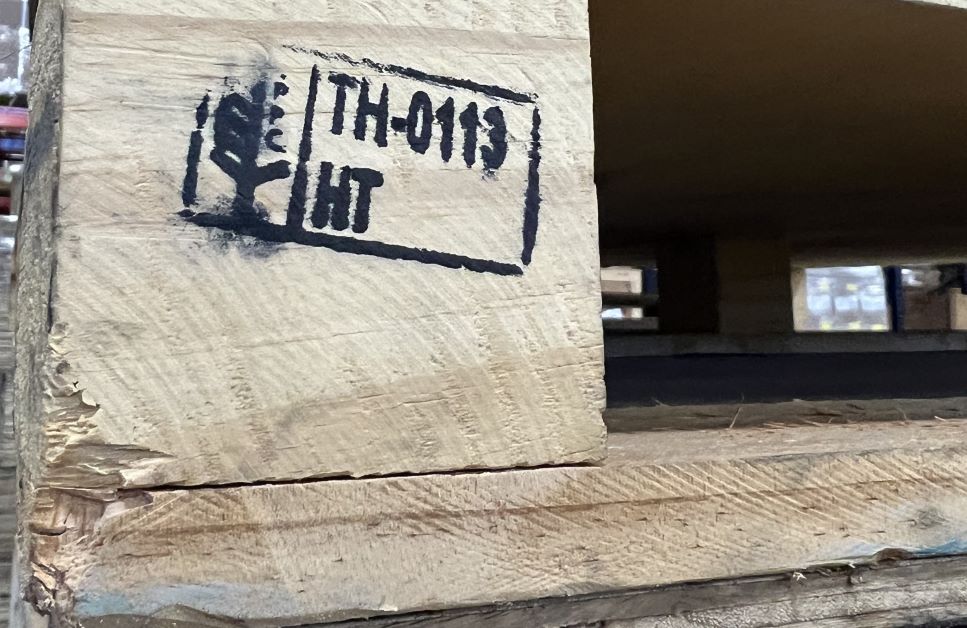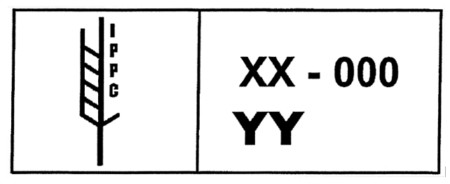
Wood Packaging Material: Stay Compliant and Pest-Free
By USA In Insight On 12th September 2023
Invasive pests are one of the most detrimental side effects of global trade. These pests can cause widespread harm to the agricultural economy. Often, they catch a ride with agricultural goods, including commonly used wood packaging materials (WPM) like crates and pallets.
To protect countries and to reduce the spread of pests being carried by wood packaging, the International Plant Protection Convention’s (IPPC) International Standards for Phytosanitary Measures 15 (ISPM 15) was established. Many countries follow these measures.
“Wood packing restrictions are for both imported and exported cargo and help prevent infestation and deforestation of the destination countries.” - Ike Miura, Export Compliance Manager, NNR Global Logistics USA
In the U.S., the Department of Agriculture, Animal and Plant Health Inspection Service (APHIS) is the agency responsible for regulating WPM imported into the U.S. in accordance with the ISPM 15. Agents inspect wood packaging for proper marking and pests at ports of entry. Obviously, the presence of pests is a problem, but so is unmarked or improperly marked WPM. Non-compliant markings or lack of marking is considered to be untreated material.
“Cargo shipped with untreated wood packing material can be costly. Segregation, fumigation, and, in some cases, refusal of entry with immediate export or destruction may result. To avoid unexpected costs and delays, ensure your suppliers are compliant with USDA regulations concerning wood packaging materials.” - Maria Miliante, Assistant V.P. for Customs Operations, NNR Global Logistics USA
What is Wood Packaging Material?
APHIS defines WPM as any solid hardwood or softwood packaging used to support, protect, or carry a commodity. WPM includes but is not limited to pallets, skids, pallet collars, containers, crating, crates, boxes, cases, bins, reels, drums, load boards, and dunnage.
Exempted Wood Packaging Materials
There are some materials that are exempted from the regulation:
· Wood packaging material made entirely from thin wood (6mm or less in thickness)
· Wood packaging made wholly of processed wood material, such as plywood, particle board, oriented strand board, or veneer that has been created using glue, heat, pressure, or a combination thereof
· Barrels for wine and spirits that have been heated during manufacture.
· Gift boxes for wine, cigars, and other commodities made from wood that has been processed or manufactured in a way that renders it free of pests.
· Sawdust, wood shavings, and wood wool
· Wood components permanently attached to freight vehicles and containers.
Approved Treatment Types
- Heat Treatment
- Fumigation with Methyl Bromide
Proper Marking
· Per 7 CFR 319.40-3(b)(2), WPM must be marked in a visible location, preferably on at least two opposite sides of the article, with a legible and permanent mark.
· The mark must be approved by the IPPC ISPM to certify it has been subjected to an approved measure and include:
- IPPC logo
- ISO two-letter country code for the country that produces the wood packaging material
- Unique number assigned by the national plant protection agency of that country to the producer of the wood packaging material
- An abbreviation disclosing the type of treatment (HT for heat treatment, MB for methyl bromide fumigation)
Example Marking

Taking Action
Wood packaging material compliance is a big deal, and if not done properly, this will cost the importer extra money to send goods back to origin or potentially liquidated damages or penalties. Be sure to take precautions by asking your WPM provider if they are ISPM 15 compliant and accredited. Educate and require your exporters to comply with the ISPM 15 standard. Lastly, consider if WPM alternatives, such as plastic, particle board, or plywood, would be more beneficial for your shipping needs.
For additional information on the USDA APHIS regulation of wood packaging material, please visit the USDA APHIS | Wood Packaging Material webpage.
For a list of countries requiring ISPM 15, please visit the USDA APHIS Countries Requiring ISPM 15 webpage.
